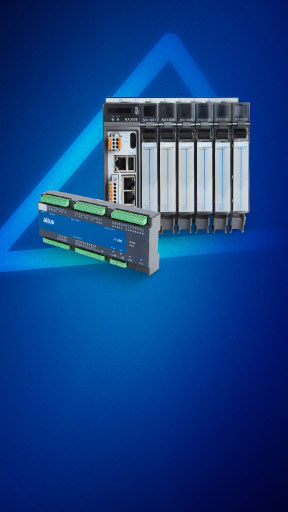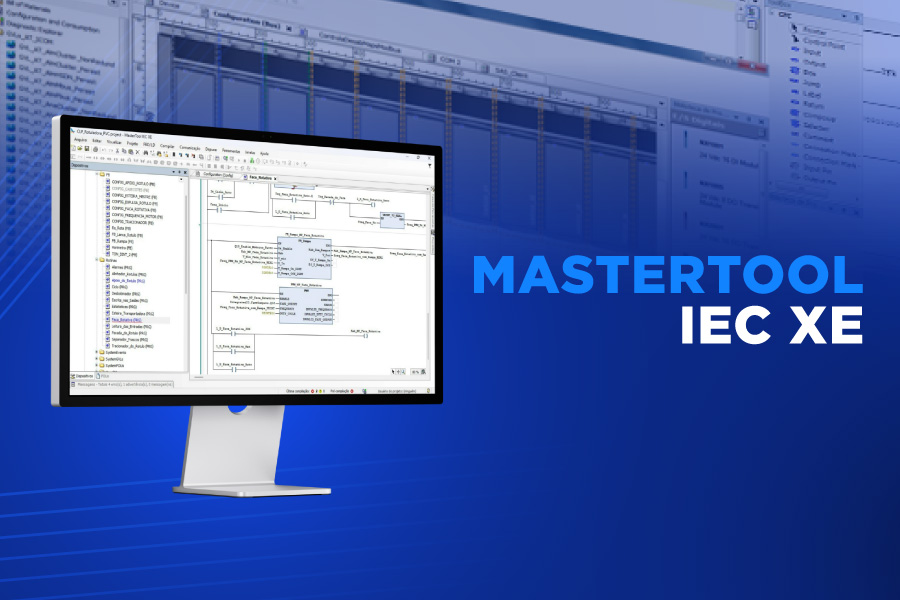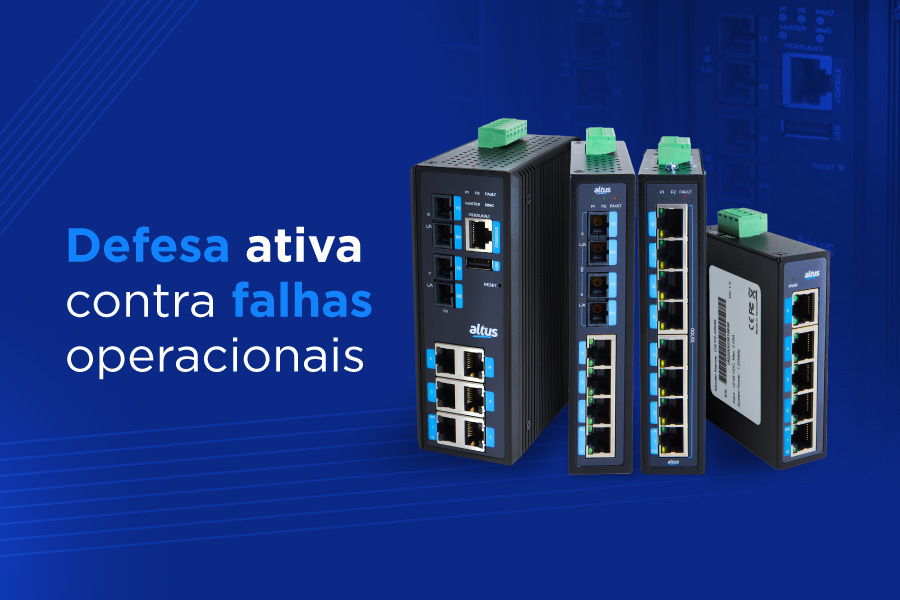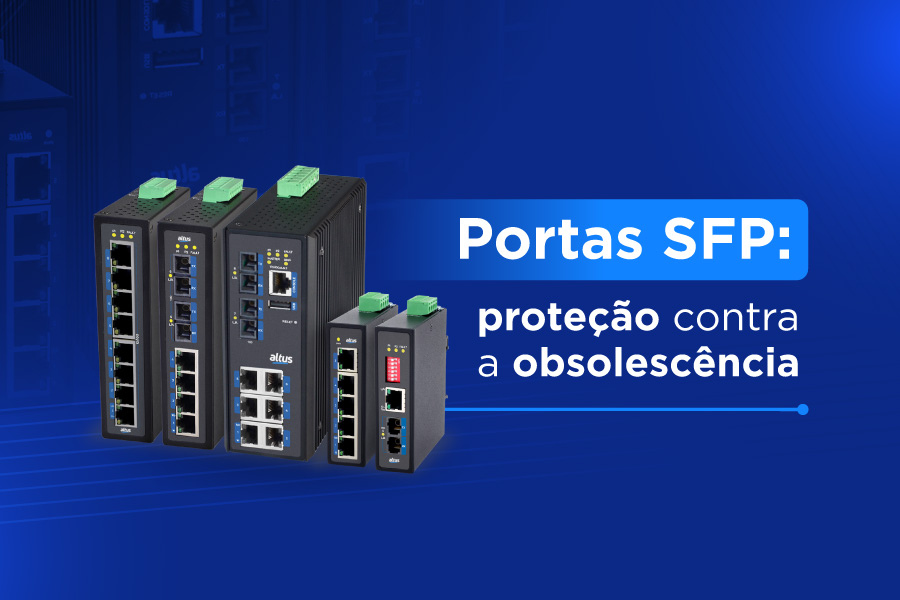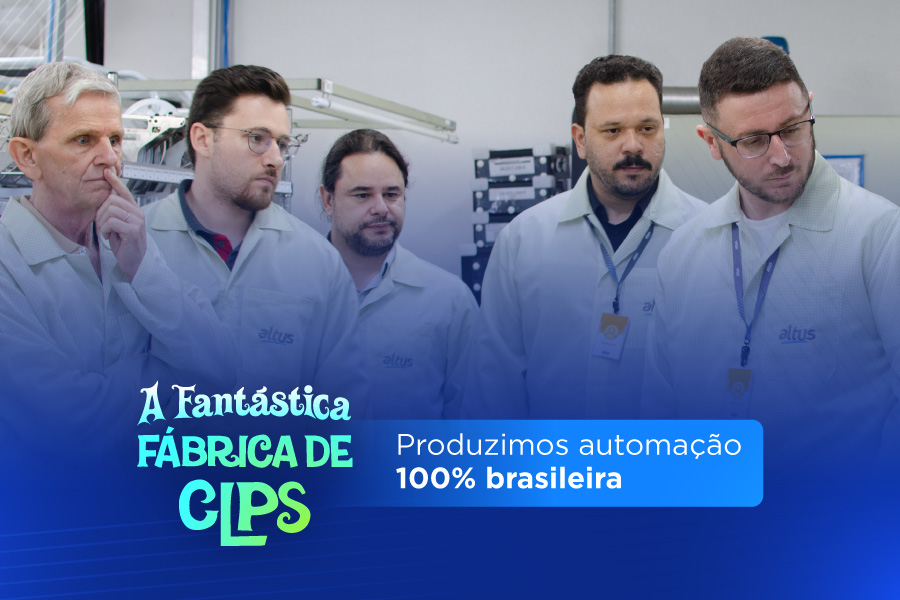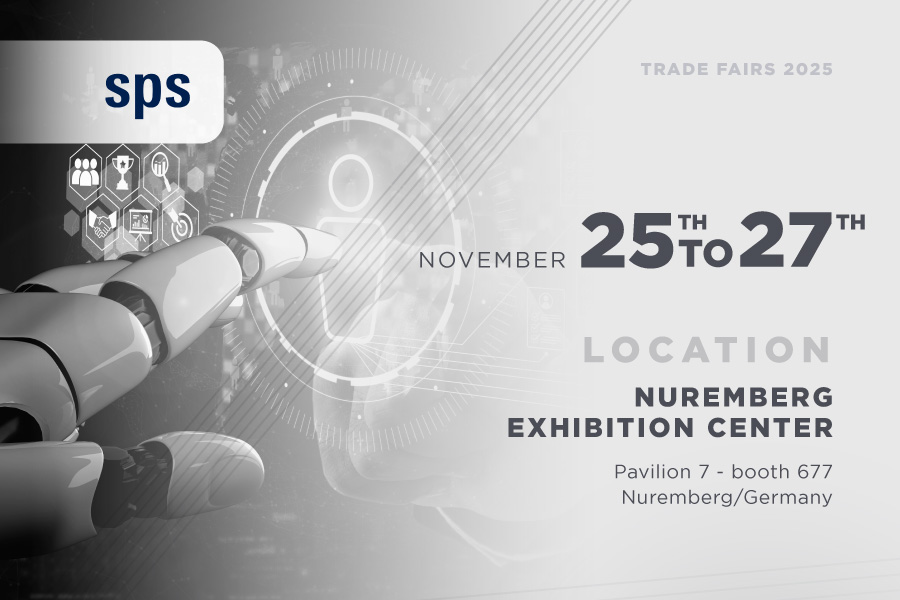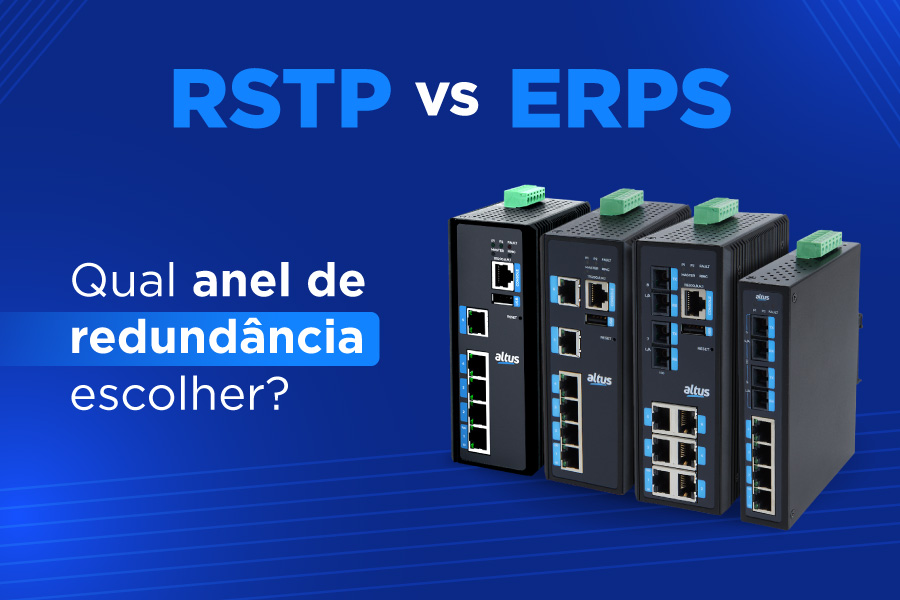In the dynamic universe of automation, engineers and integrators constantly seek tools that not only keep pace with technological evolution but also drive it. The increasing complexity of systems, the need for time optimization, and the search for robust and secure solutions are daily challenges.
It is in this scenario that one name stands out as an essential tool: MasterTool IEC XE.
This software is an integrated platform for the development, configuration, simulation, diagnosis, and monitoring of industrial applications. And best of all: with features accessible to both beginners and experienced users. MasterTool is a tool designed to optimize every stage of your applications' lifecycle. From the graphical conception of the architecture to the simulation of realistic scenarios and advanced diagnostics, it centralizes everything you need.
This integration is even more powerful when combined with the Nexto series of PLCs.Recognized for their ruggedness, modular design, and innovative features, Nexto controllers are the ideal equipment for medium and large-scale systems, or for machines that demand high performance. Together, MasterTool IEC XE and the Nexto series form an integrated development environment, simplifying the configuration of field networks and eliminating the need for additional software, which translates into a drastic reduction in development time.
In this article, we will clarify the main questions about MasterTool, covering everything from basic concepts to advanced software and hardware features to show why this development environment is one of the most complete choices on the market.
MasterTool Lite (Mtool Free): your gateway to automation
Want to start your journey in industrial automation without barriers? Altus has thought of you. The MasterTool IEC XE MT8500 is distributed in four versions, and the Lite version is offered for free.
With MasterTool Lite, you can program and upload projects with up to 320 I/O points on the Nexto bus. It supports the five IEC programming languages (ST, SFC, FBD, LD, CFC) and is compatible with various Nexto Series controllers, such as NL717, XP300-351, NX3003/3010, and NX5100/5101. It is the ideal tool to get to know the software and Nexto equipment, building a solid foundation for future projects.
Comparative table of MasterTool IEC XE versions
| Feature | Lite | Basic | Professional | Advanced |
| Available Languages (IEC 61131-3 + CFC) | 5 | 5 | 5 | 5 |
| Structured Text (ST) | Yes | Yes | Yes | Yes |
| Graphical Function Sequencing (CFS) | Yes | Yes | Yes | Yes |
| Functional Block Diagram (FBD) | Yes | Yes | Yes | Yes |
| Ladder Diagram (LD) | Yes | Yes | Yes | Yes |
| Continuous Function Chart (CFC) | Yes | Yes | Yes | Yes |
| Support for NL717, XP300-351, NX3003-3010, NX5100-5101 | Yes | Yes | Yes | Yes |
| Support for NX3020 | No | Yes | Yes | Yes |
| Support for NX3030 | No | No | Yes | Yes |
| Support for Bus Expansion | No | Yes | Yes | Yes |
| Support for Bus Expansion Redundancy | No | No | Yes | Yes |
| Support for Ethernet Expansion | No | No | Yes | Yes |
| Support for Ethernet Expansion Redundancy | No | No | Yes | Yes |
| Support for Field Network Interfaces (PROFIBUS DP) | No | Yes | Yes | Yes |
| Support for Field Network Interface Redundancy | No | No | Yes | Yes |
| Support for Half-Cluster Redundancy | No | No | No | Yes |
| Limit on the Number of Local I/O Points | Yes | Yes | No | No |
| Maximum Number of Local I/O Points | 320 | 2048 | Unlimited | Unlimited |
The scalability of the Altus’ solution ensures you can evolve from basic to more advanced versions as your projects grow, while maintaining the same software platform.
Five languages, the IEC 61131-3 standard, and the power of CFC
Flexibility is the key to operational innovation, and MasterTool embodies this principle by offering full support for the five programming languages standardized by the IEC 61131-3 standard: Structured Text (ST), Sequential Function Chart (SFC), Function Block Diagram (FBD), and Ladder Diagram (LD). And as a bonus, it includes the Continuous Function Chart (CFC) extension.
With this diversity, you can use different languages within the same application, organizing projects, reusing previously developed code, and ensuring that your team, even with different specializations, can collaborate efficiently, choosing the most suitable language for each segment of the control logic.
Object-Oriented Programming: reusability and scalability
Imagine building complex systems with the same ease as assembling a set of blocks. This is the essence of Object-Oriented Programming (OOP) in MasterTool IEC XE. Integrated from programming features to the organizational structure of projects, OOP allows you to create functional blocks with properties, methods, inheritance, and method invocation.
Program Organization Units (POUs) are the fundamental objects for building your PLC program, allowing their instantiation anywhere in the project. Support for inheritance means you can derive one functional block from another, extending its properties and methods and promoting code reuse. The result? Agility in development and maintenance, and the ability to create truly scalable projects.
Variables and editor features
The flexibility of MasterTool IEC XE extends beyond languages, offering an arsenal of advanced features to optimize programming. This includes special operators and variables that allow manipulation of scope operators for extended namespaces, function pointers (replacing INSTANCE_OF), Init and Exit methods for functional block lifecycle control, and the ability to use output variables in functions and method calls.
The software also supports permanent variables (VAR_TEMP, VAR_STAT, VAR_RETAIN, VAR_PERSISTENT), initialization of variables with arbitrary expressions, assignment as an expression, and index access with pointers and strings.
The editors are equipped with functionalities that enhance productivity: the ST Editor (Structured Text) offers line breaks, autocompletion, monitoring, and SET/RESET assignment on the line. The FBD (Functional Block Diagram) and LD (Ladder Diagram) editors are reversible and programmable in a combined environment, allowing for changes to outputs in boxes with multiple outputs, branches and networks within networks, and flexibility in parameter updates. The SFC Editor (Sequential Function Chart) simplifies sequence creation with macros, multiple element selection, and automatic declaration of signaling variables.
For library management, MasterTool allows multiple versions in the same project via context, with installation in repositories, automatic updates, and debugging.
In addition, various additional functionalities enhance the experience: integrated PLC and task configuration in the device tree, UNICODE support, single-line comments, watchdog, multiple object selection, integrated online help, conditional compilation and breakpoints, and advanced debugging (step to cursor, return to previous caller). The software also ensures compatibility with IEC 61131-3 fieldbus drivers, symbolic and PLC configuration available in the application, free memory allocation for code and data, and pre-compilation notes on syntax errors.
Simplified connection: Demystifying MQTT and Datalogger
Any automated industry requires highly efficient connectivity and data collection. MasterTool IEC XE was designed to make the use of interfaces for field networks incredibly simple, eliminating the need for specialized software to configure your field network; MasterTool meets this requirement with a single tool.
The MQTT protocol is a lightweight and open standard, ideal for M2M and IIoT environments where bandwidth is often limited. It operates on a publish/subscribe model, an efficient alternative to the traditional client-server model.
In this model, devices do not communicate directly. Instead, they connect to a central hub called a broker. When a device (the publisher) has data to send, it publishes it to a specific topic on the broker. Any other device (the subscriber) interested in this data simply subscribes to that topic and receives the relevant messages. This approach means that data is transmitted only when there is a change or at defined intervals, optimizing network traffic and ensuring real-time information.
Parallel to connectivity, data collection and storage are crucial. Dataloggers can store data locally (on SD cards or controller RAM) or transmit it continuously to web-based tools. Integration with PLCs can be done through global IEC 61131-3 variables, with data transfer to "data sinks" (such as databases or CSV files). For high-speed applications or remote systems with intermittent connectivity, data can be buffered on the device and then logged.
The wizards for MQTT and datalogger simplify the configuration of communication with servers and the storage of data, eliminating the need for complex scripts. The detailed configuration of communication MODBUS RTU and Ethernet establishes a solid foundation for the implementation of protocols like MQTT, preparing the ground for a broader adoption of industrial IIoT solutions. This means that the implementation of data monitoring and control systems becomes much more accessible.
Veja aplicações com MQTT nos controladores Nexto XP
PIDA: optimizing process control with automatic tuning
MasterTool IEC XE integrates the NextoPID.library, which provides PID functional blocks like PID_REAL and PID_INT. The software also includes a control editor, a tool that facilitates the insertion and configuration of PID controllers in your applications.
This editor offers a graphical visualization of the process, tools for configuring the controller parameters, and, most importantly, an automatic tuning procedure, known as PIDA (PID Auto-tuning)This functionality significantly simplifies the adjustment of controller parameters to optimize process performance, making high-performance process control more accessible to a wider audience. The result is a reduction in commissioning time and an improvement in control quality, directly impacting the efficiency and stability of your industrial processes.
Hot swapping and extreme resistance for field operations
During factory operations, every minute of inactivity is expensive. For this reason, the ruggedness and reliability of equipment must be priorities. The Nexto NX series,with its intelligent design and modular architecture, is designed to facilitate the maintenance and expansion of systems.
This modular architecture, combined with the advanced diagnostic features of MasterTool, demonstrates the ability to perform module replacement without the need to shut down the system: the famous hot swapping.Furthermore, the NX series is designed to operate in challenging industrial environments that frequently impose adverse conditions, such as high humidity and elevated temperatures. The durability and maintainability, including hot-swapping and tropicalization, are fundamental for ensuring operational continuity, minimizing downtime and maintenance costs.
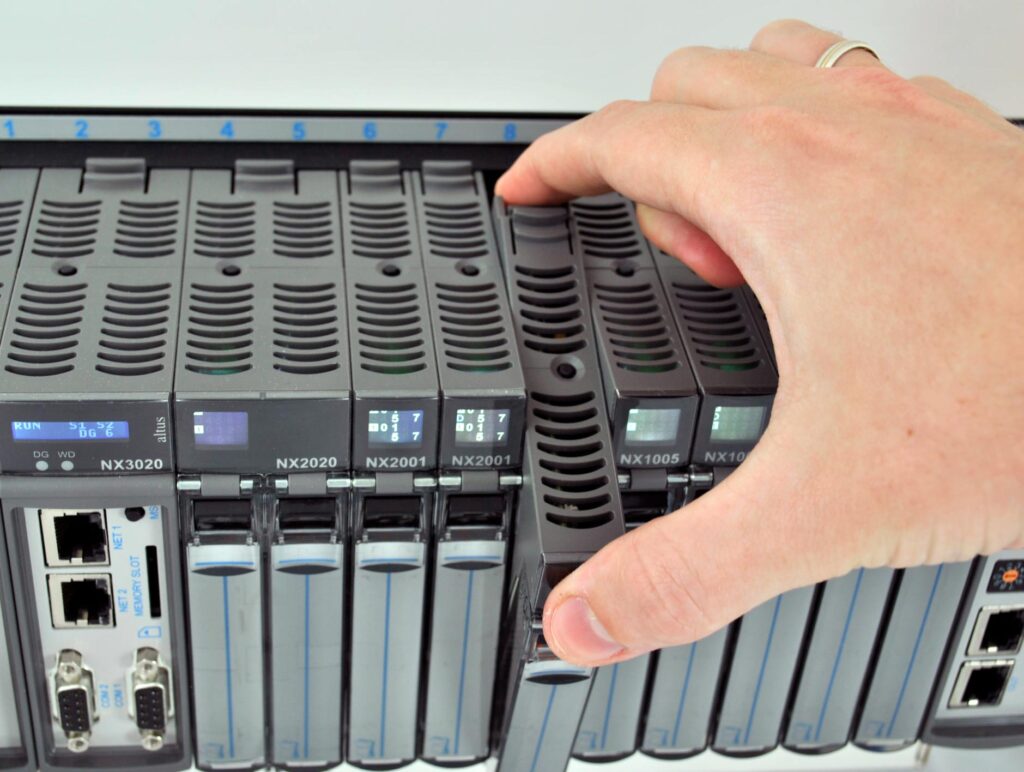
Cybersecurity to protect your assets
In an increasingly connected world, cybersecurity is non-negotiable. MasterTool incorporates strong security mechanisms to protect both your application and access to the PLC. It offers two different mechanisms for application protection and security features: intellectual property protection and secure login.
Intellectual Property Protection allows entire projects or specific files to be password-protected, ensuring that access and manipulation only occur after authentication. Secure login, in turn, prevents unauthorized access to the application, requiring a user password before executing critical commands between MasterTool and the CPU, such as stopping, programming, or forcing output points.
The Nexto CPUs also feature a user permission management system, allowing the blocking or permitting of specific actions for different user groups. This layered security approach is fundamental for preventing intellectual property theft and the improper manipulation of critical systems. In addition, tools such as sniffers for traffic monitoring) and VPNs (for secure remote access) complement MasterTool's internal protections, ensuring that your automation systems are more secure against cyber threats, protecting both technical knowledge and operational integrity.
Automation with Python: integrating the best of IT and OT
The convergence between Information Technology (IT) and Operational Technology (OT) is a reality. And MasterTool's conformity with the IEC 61131-3 standard and support for open communication protocols like OPC DA and MODBUS enable an architecture that favors interoperability.
This openness allows MasterTool and the Nexto series to integrate with broader software ecosystems, including those based on Python. The ability to execute Python scripts with advanced functions, through simple and expressive code, allows the user to significantly reduce engineering time and make the project development stages more agile.This flexibility ensures the longevity and adaptability of Altus solutions in a constantly evolving automation scenario, where the integration of different technologies is increasingly vital.
As Python is a multiplatform language, the developed code can be executed on various operating systems (Windows, Linux, macOS) without the need for significant modifications. This flexibility simplifies deployment in heterogeneous industrial environments, and MasterTool's integration with Python, through its open protocols, allows engineers to create more intelligent, adaptable, and efficient automation solutions, leveraging the best of both worlds: the robustness and precise control of PLCs with the flexibility and analytical power of programming.
Firmware update and essential configurations
Remote management is a competitive differentiator. MasterTool offers an integrated web server in the Runtime system. that can be accessed by a WebVisu client, based on a Java applet. This web server is capable of displaying the application's visualization on any visualization system. Access to this web interface is performed simply, via the web server's IP address and port.
The web page's ability to allow application visualization and operation enables a complete remote management environment. Firmware updating is a crucial maintenance process, and the possibility of performing it remotely via web for the PLC is an essential feature for modern industrial devices.
The PLC Clock (RTC) is another hardware feature present in physical PLCs, and the IP address configuration is performed through the Ethernet interfaces in the UCP editor, complementing the configurations performed via MasterTool. Additionally, the diagnostics page and event log are important functionalities that can be exposed via the web interface for remote monitoring.
The presence of an integrated web server and the ability to access the application's visualization through a browser transform the PLC into a device with remote management capabilities. This functionality significantly simplifies maintenance and diagnostics, reducing the need for dedicated client software on each workstation and increasing agility in responding to operational events, putting control in the palm of your hand.
To explore the full potential of MasterTool IEC XE, we invite you to download the software documentation, available for free.
Download the full manual here
For additional information about MasterTool, Nexto products, or technical support, do not hesitate to contact Altus via the form!
